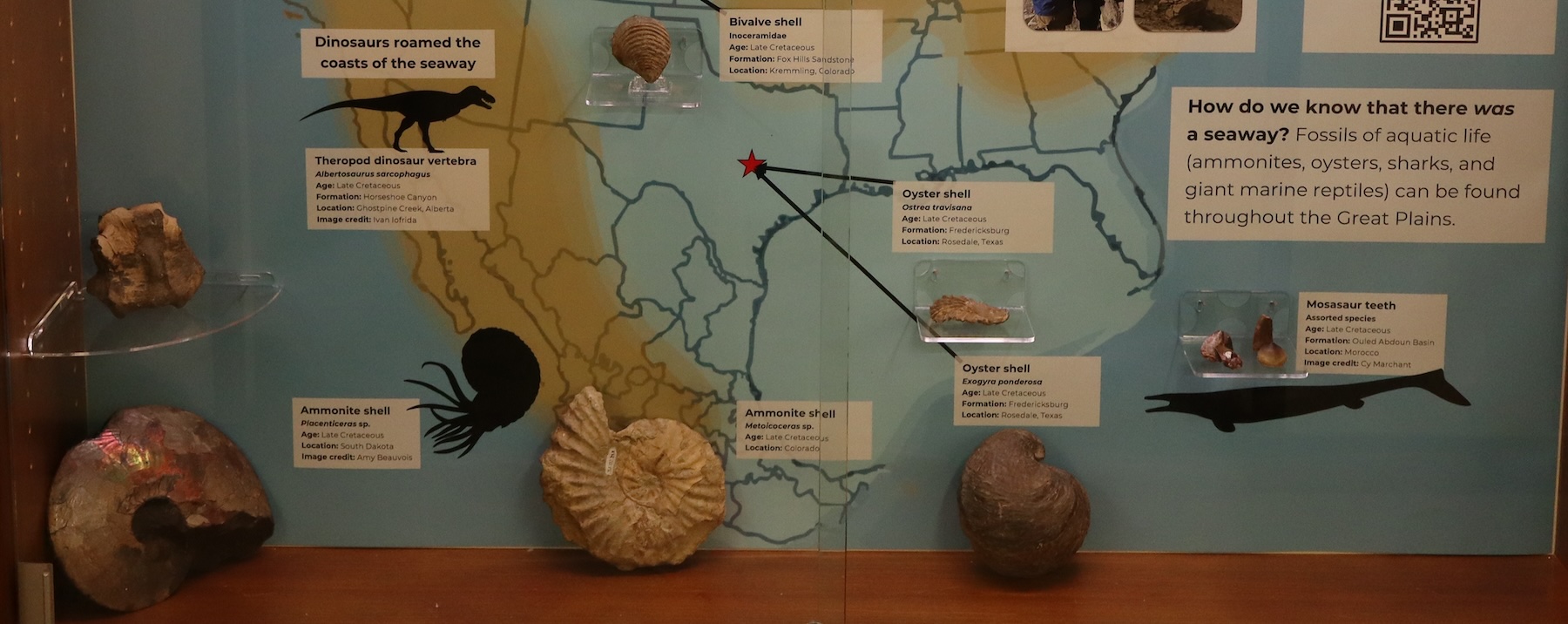
New exhibit highlights Cretaceous sea fossils from the center of North America
November 17, 2025
During the Cretaceous period, saltwater flooded the Great Plains of the USA and Canada. For millions of years, this Western Interior Seaway stretched from the Arctic to the Gulf of Mexico, dividing North America in two. An exciting new exhibit, located on the third floor of DEEPS premises in the Tech building, highlights this inland sea and the organisms that inhabited it. Designed by student Jonathan Chen (Earth and Planetary Sciences, 2026) and installed by Jonathan and Prof. Trish Beddows, the exhibit showcases specimens from the department’s own fossil collection, including iridescent ammonites and mosasaur teeth.
Though the Midwest today is above sea level and surrounded by land, fossilized oyster shells, shark teeth, and ammonites provide the evidence that this center of the continent was once underwater. Much of what we understand about this seaway stems from student and faculty research in the Department of Earth, Environmental, and Planetary Sciences. This history of research began in 1963 with Prof. Laurence L. Sloss’s description of the Zuñi sequence, and continues through research led by Prof. Brad Sageman, who also has taught a field course tracking the rise and fall of the seaway: Field Problems in Sedimentary Geology (EARTH 331).
Prior to the design of this exhibit, Jonathan worked to restore the department’s fossil collections, cataloging and preserving historical specimens (including those featured in this exhibit). Among other courses, Jonathan took EARTH 331 as well as EARTH 374, Paleobiology, taught by Prof. Rosemary Bush. Through the Western Interior Seaway, this exhibit hopes not only to showcase department collections and research, but also to illustrate the extent to which all parts of Earth, even those close to our homes in Illinois, have changed over geologic time.
